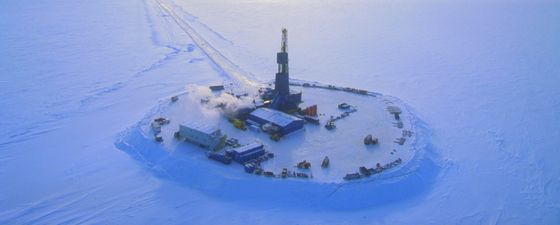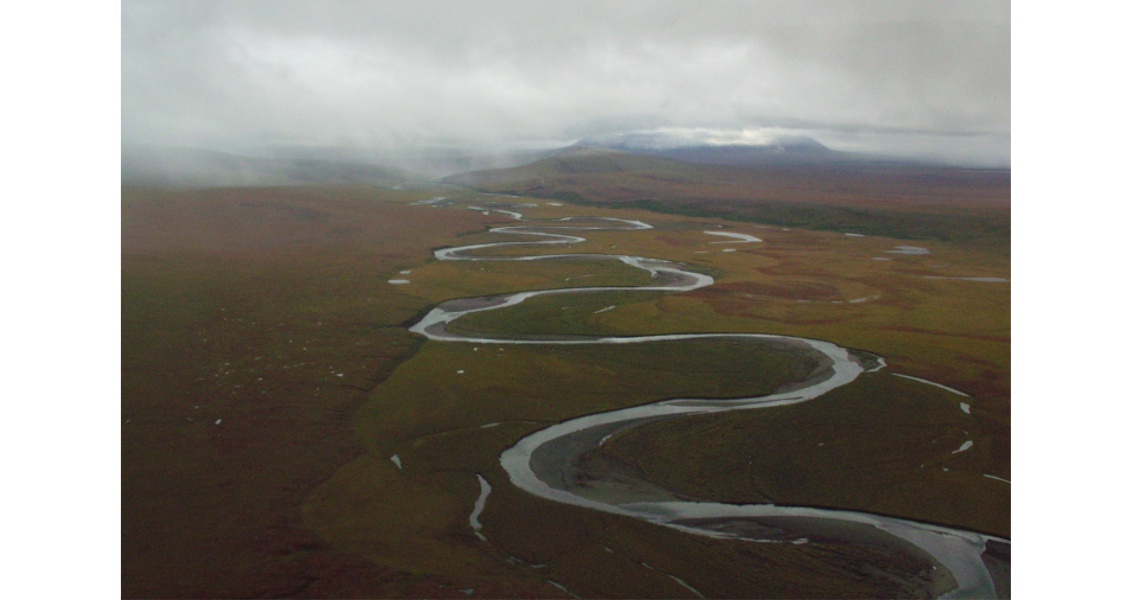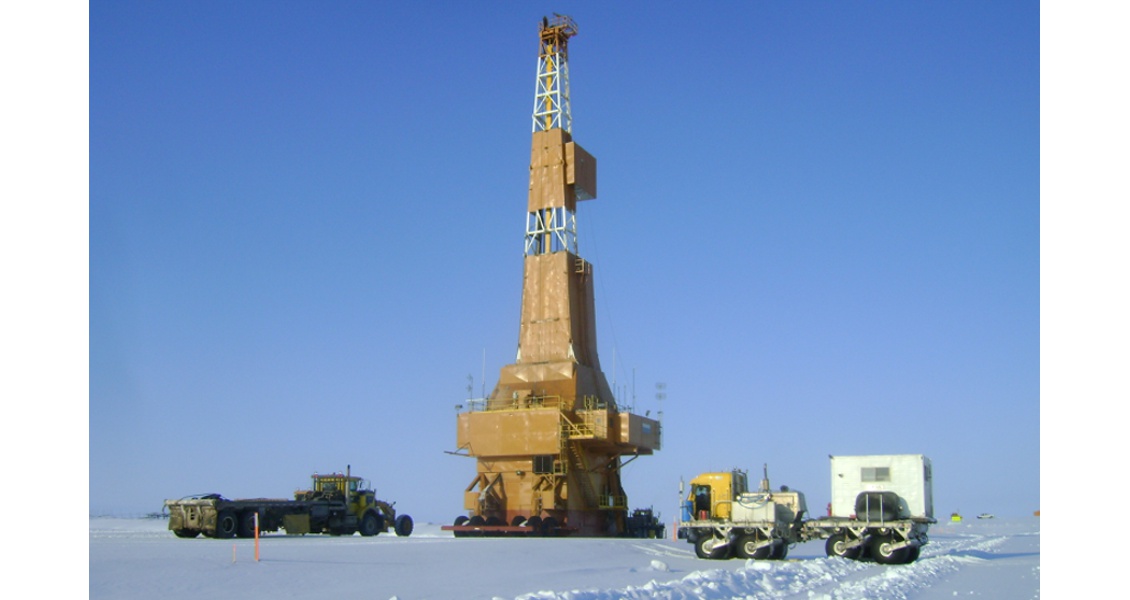Before the historical discovery of oil at Prudhoe Bay in 1968, the Inupiat Eskimos living on the North Slope of Alaska lived a lifestyle unlike most others in the United States. They bathed in galvanized tubs, thawed drinking water from ice, and relieved themselves in 5-gallon cans. Power, infrastructure, and the safe disposal of human waste? None were part of their existence in temperatures that often dipped – and still do – below zero.
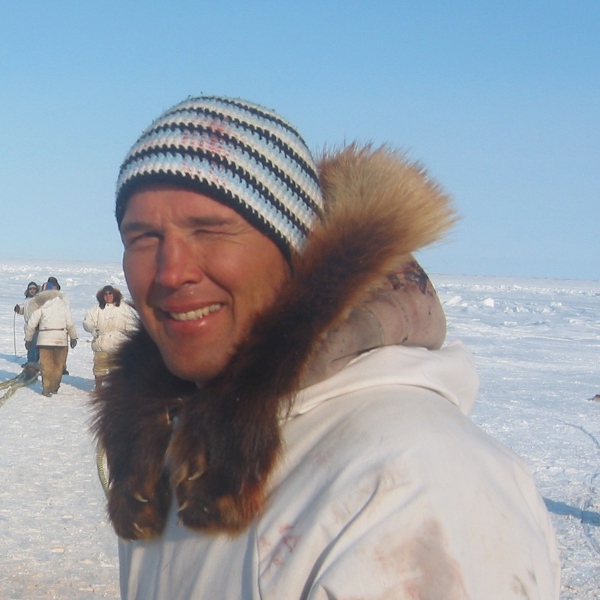 Richard Glenn smiles after a successful whaling expedition off the coast of Barrow, Alaska in the Chukchi Sea in 2003. (Source: John Craighead George)The oil and gas industry’s major discoveries north of the Brooks Range changed all of that.
Richard Glenn smiles after a successful whaling expedition off the coast of Barrow, Alaska in the Chukchi Sea in 2003. (Source: John Craighead George)The oil and gas industry’s major discoveries north of the Brooks Range changed all of that.
The North Slope Borough, a local governing body established by the Inupiat in 1972, taxes the industry’s above-ground infrastructure, including pipelines, buildings and roads. The flow of funds – more than $100 million annually, in fact – practically modernized the Inupiat community overnight with clinics, fire protection, schools, and flush toilets.
Yet, ironically, as the industry moves into the Arctic Ocean, some say it could threaten the existence of thousands of Inupiat Eskimos. One oil spill or any loss of well control could jeopardize the food sources on which practically every Inupiat depends. This concern has become the talk on the North Slope these days, especially since Shell announced plans to resume its exploration program in the Chukchi Sea this year.
Perhaps no one understands the precarious walk down the tightrope better than Richard Glenn.
The son of an Inupiat mother and Caucasian father, Glenn moved to Alaska as an adult to work as a geologist. It didn’t take long, however, for him to accept a corporate position overseeing millions of acres of Inupiat land and resources, striving to find a way to simultaneously welcome the industry and protect the beloved environment.
Unlikely Groups
Although Glenn grew up in San Jose, Calif., he spent many summers in his mother’s native village of Barrow, Alaska, the northernmost community in the United States – 340 miles north of the Arctic Circle – knowing in his heart he would later move there. He left San Jose State University with a bachelor’s degree in geology in 1985 and headed to Fairbanks, Alaska for his master’s, which he earned in 1991.
While his professional experience includes petroleum geologic studies, field mapping, structural geologic and seismic interpretation, and permafrost, among other subjects, it was the study of sea ice that played a pivotal role in his career.
Studying sea ice in a classroom gave him an academic perspective on the science. Learning about sea ice from the Inupiat, who have observed its patterns for hundreds of years, rounded out his education in ways that few students experience. It also opened his mind to the whole picture that can be achieved by combining unlikely groups.
“When you get experts together from both sides, the cultural differences disappear. Everyone simply becomes colleagues,” he says.
Politics on the North Slope
Glenn is not a historian, but like many Inupiat – a word that means ‘the real people’ – he knows well the plight of his predecessors’ long struggle to retain rights to their land, especially after the major discoveries of Prudhoe Bay and the Kuparuk River oilfields in the late 1960s.
The US government passed the Alaska Native Claims Settlement Act of 1971 that gave approximately 75,000 native Alaskans 44 million acres (178,000 km2) of land and nearly $1 billion with which to establish businesses to generate revenue. These were mandated to operate under the auspices of 12 regional corporations created by the settlement act that are owned and managed by native Alaskans. One of them, the Arctic Slope Regional Corporation (ASRC), where Glenn serves as executive vice president of Lands and Natural Resources and as a board director, oversees 5 million acres (20,250 km2) rich in minerals on the North Slope. The ASRC is owned by 11,000 Inupiat, many of whom support the petroleum industry with businesses that provide engineering, operations and maintenance services. In fact, Glenn ran a business in the 1990s that provided information about ice strength to various researchers.
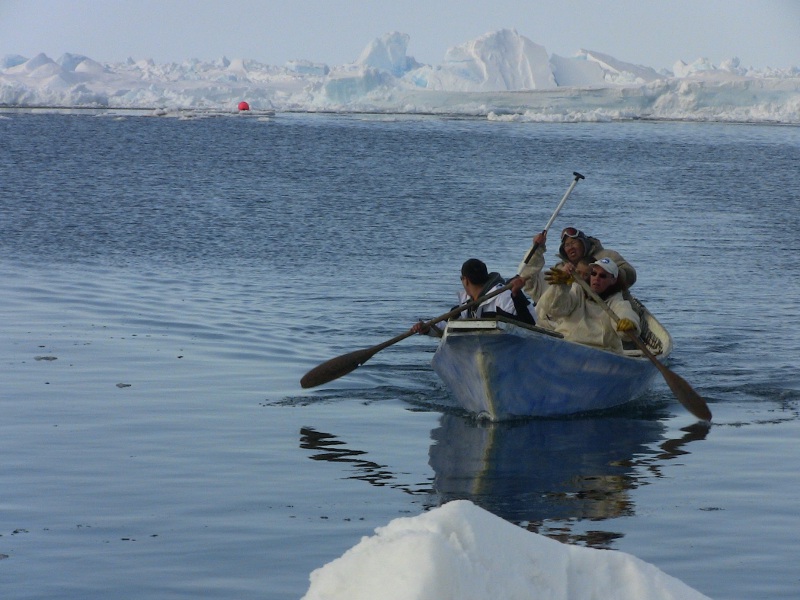 Richard Glenn, wearing a white hat and navigating his way through the Chukchi Sea near Barrow, Alaska, is co-captain of his family’s subsistence whaling crew. (Source: R. Glenn)However, it is the tax revenue generated from the industry that keeps the Inupiat Eskimos in the modern world. “There is no other revenue that can support the level of public services we are providing to the people. Oil and gas have become very important to our livelihood,” says John Hopson, mayor of Wainwright, one of eight villages represented by the ASRC.
Richard Glenn, wearing a white hat and navigating his way through the Chukchi Sea near Barrow, Alaska, is co-captain of his family’s subsistence whaling crew. (Source: R. Glenn)However, it is the tax revenue generated from the industry that keeps the Inupiat Eskimos in the modern world. “There is no other revenue that can support the level of public services we are providing to the people. Oil and gas have become very important to our livelihood,” says John Hopson, mayor of Wainwright, one of eight villages represented by the ASRC.
The tax revenue also enables the Inupiat to continue their subsistence lifestyle, which grows more costly by the day. Skin boats and dog teams have been replaced by snow machines and motorboats – all of which rely on fuel, which typically costs $8 a gallon in this corner of the world. “Hunting is our main diet,” Hopson continues. “Whaling is very important to the people of the North Slope.”
As a co-captain of his family’s subsistence whaling crew, Glenn understands the importance of both subsistence living and oil and gas revenue firsthand.
Finding That Delicate Balance
With the US federal government’s announcements earlier this year of new areas off limits to exploration in the Chukchi and Beaufort seas in addition to stricter drilling regulations, industry advocates such as Glenn have their work cut out for them.
Aware of the perceived dichotomy between the industry and the environment, Glenn is working to bring together another set of unlikely groups: the offshore industry and those who oppose it. As a member of the US Arctic Research Commission, board president of the Barrow Arctic Science Consortium, and board member of the Arctic Research Consortium of the United States, Glenn’s credentials carry weight.
Several years ago, he spoke before the House Energy and Commerce Subcommittee on Energy and Power to try and win the federal government’s support for offshore Arctic exploration. Citing the steep decline in the quantity of oil that creeps through the Trans-Alaska Pipeline (less than one-third of its peak throughput), he explained that offshore exploration will pave the way for future generations to attend school and power their villages.
“This issue boils down to community survival,” he said. “Safe and responsible oil and gas development is the only industry that has remained in our region long enough to foster village improvements. The people of the North Slope have a heightened concern for the environmental effects of oil and gas exploration and development. No one has more at stake than we do regarding environmental risks.”
After making a plea to the government, Glenn and his colleagues at the ASRC are now turning to those in their own community who have trepidations about offshore exploration. Hunting whales, fish, seals and walruses is woven into the DNA of the Inupiat. Especially for the community’s elders, continuing such activities is of primary concern, explains Teresa Imm, senior vice president of Resource Development for the ASRC. The thought of oil and gas companies drilling in the Chukchi and Beaufort seas has unleashed outspoken critics, she says, attributing many of their fears to erroneous messages swarming on social media platforms and concern over the 2010 Macondo incident repeating itself.
In response, an educational campaign has begun in order to inform the Inupiat that public safety, schools, search and rescue capabilities, water and sewer services, planning and zoning, and health and social service programs only exist through North Slope Borough revenues generated by the petroleum industry – a fact that many don’t realize.
“In the 1970s, a large segment of the population believed that when Prudhoe Bay was discovered, subsistence would be lost as a result of the impacts of oil industry infrastructure – that it would have a major impact on the caribou,” Imm says. “But that hasn’t played out as it relates to subsistence. Subsistence is still strong on the North Slope.”
Co-Existence
Having studied the oil spill prevention and response plans of Shell and other operators in the Arctic Ocean, Glenn believes that a robust system – complete with dispersants, in-situ burning techniques and mechanical recovery – is in place for safe exploration. “We were favorably impressed by the timing, technology and safeguards introduced by the Alaska Outer Continental Shelf explorers,” he says. He noted that offshore drilling in the past has taken place more than 80 km from the coast and never disrupted the subsistence activities of the Inupiat.
 Whale bone monument. (Source: Teresa Imm)Working to demonstrate that the offshore industry and the Inupiat can co-exist, Glenn and his team have achieved some degree of unity. Some Inupiat Eskimos in the coastal villages have teamed with Shell to train for oil spill response efforts, if ever needed. And six of the ASRC villages have created a business partnership with Shell so they might reap the financial benefits of a discovery to balance any potential risks.
Whale bone monument. (Source: Teresa Imm)Working to demonstrate that the offshore industry and the Inupiat can co-exist, Glenn and his team have achieved some degree of unity. Some Inupiat Eskimos in the coastal villages have teamed with Shell to train for oil spill response efforts, if ever needed. And six of the ASRC villages have created a business partnership with Shell so they might reap the financial benefits of a discovery to balance any potential risks.
“Some people are not ever going to support offshore exploration and development, which we recognize,” Imm says. “But for the most part, we have received positive responses from the shareholders on this venture.” “The key to our success is to be able to sit around the table so that industry and government and the people have a say in what happens with our future,” Hopson said.
As Glenn reminds us, offshore Arctic drilling is taking place in multiple countries. In his eyes, to make lucrative areas off-limits or economically unfeasible to drill essentially transfers an unlikely threat to the environment to a looming threat for the Inupiat.
Yet, both can be protected, insists Glenn, from his rare vantage point. The environment and the Inupiat are not unlikely groups. Rather, each is part of the other and must remain so.

